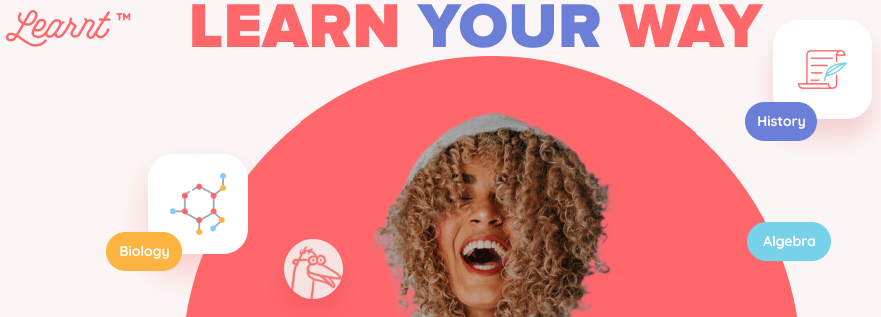Calculus Problems: A Gateway to Mathematical Mastery
Calculus, often regarded as the pinnacle of mathematical thinking, is a branch of mathematics that deals with change and motion. It's a crucial tool for understanding and solving real-world problems in fields like physics, engineering, economics, and computer science. At its heart, calculus involves solving a wide array of mathematical problems that can seem daunting at first but become manageable with practice and understanding. In this article, we will delve into what calculus problems are, why they matter, and how to approach them with confidence.
The Essence of Calculus Problems
Understanding the Core Concepts
The essence of calculus problems lies in their ability to capture and quantify change. At its core, calculus provides a powerful set of tools for understanding and analyzing how things evolve, whether it's the motion of an object, the growth of a population, or the behavior of a system over time. The two fundamental concepts of calculus, differentiation, and integration, are the key to unlocking this understanding.
Differentiation is the process of finding the rate at which a quantity changes. In the context of calculus problems, it often involves calculating derivatives. Imagine tracking the position of a moving car at various points in time. The derivative of this position function would give you the car's instantaneous velocity at any specific moment. This concept extends to various fields; for instance, in economics, derivatives can represent marginal costs or revenues, providing insights into optimal decision-making.
Integration, the counterpart to differentiation, is about accumulating quantities. If differentiation reveals the rate of change, integration helps us understand a quantity's total change or accumulation. For instance, integrating the velocity function of the car over time would yield the total distance traveled. In economics, integrating a rate of production can yield the total output. This concept is fundamental in grasping the cumulative effects of dynamic processes.
The essence of calculus problems becomes clearer when visualizing them graphically. Functions and their derivatives or integrals are often represented as curves on coordinate axes. The slope of a tangent line at any point on a curve corresponds to the derivative, while the area under the curve up to a certain point represents the integral. These visual representations provide an intuitive way to grasp the dynamic relationships described by calculus.
The true essence of calculus problems comes to life when applied to real-world situations. Whether it's predicting the trajectory of a projectile, optimizing resource allocation in business, modeling the spread of a disease, or understanding the behavior of financial markets, calculus offers a mathematical language to describe and solve dynamic problems. Its applications are diverse and touch virtually every field of science and engineering.
The essence of calculus problems is also in the art of problem-solving. Tackling these problems requires a combination of analytical thinking, creativity, and a solid understanding of the underlying principles. As individuals work through calculus problems, they not only refine their mathematical skills but also develop a problem-solving mindset that is applicable across various domains of knowledge.
Types of Calculus Problems
Exploring the Variety
Calculus problems can be broadly categorized into two main types: differentiation problems and integration problems. Within these categories, there is a wide variety of subtypes, including:
- Derivatives: These problems focus on finding the slope of a curve at a specific point. Common tasks include calculating tangent lines, velocity, and acceleration.
- Integrals: Integration problems involve finding the area under a curve. Applications include calculating work, distance traveled, and accumulated quantities.
- Optimization: These problems require finding maximum or minimum values of functions, often involving real-world scenarios like cost minimization or profit maximization.
- Related Rates: These problems involve multiple variables that change with time, requiring you to find how they are related as they evolve.
- Differential Equations: These are equations involving derivatives and are used to model dynamic systems, making them vital in science and engineering.
Real-World Applications
Why Calculus Matters
Calculus problems are not just abstract exercises. They have a profound impact on our understanding of the world and our ability to solve complex, real-world challenges. Here are some practical applications of calculus:
- Physics: Calculus is the language of physics. It's used to describe motion, forces, and energy in the universe.
- Engineering: Engineers rely on calculus to design structures, systems, and devices, ensuring they operate efficiently and safely.
- Economics: Calculus helps economists model and predict economic behaviors, making it crucial in decision-making and policy analysis.
- Biology: Biologists use calculus to model population growth, study disease spread, and understand biochemical reactions.
- Computer Science: Algorithms and data analysis rely on calculus to process and analyze vast amounts of data efficiently.
- Medicine: Medical imaging and drug dosage calculations often require calculus to ensure patient care and diagnosis.
Tips for Tackling Calculus Problems
Empowering Problem-Solving
- Understand the Basics: Before diving into complex problems, grasp the fundamentals of differentiation and integration. This includes understanding rules like the product rule, chain rule, and integration techniques.
- Practice, Practice, Practice: Calculus problems get easier with practice. Solve a variety of problems to gain confidence in your skills.
- Visualize the Problem: Use graphs and diagrams to visualize the problem. This can help you understand the problem and find solutions more easily.
- Break It Down: Complex problems can be intimidating. Break them down into smaller, manageable steps, and solve them one at a time.
- Seek Help: Don't hesitate to ask for help. Professors, tutors, and online resources are available to assist you.
Common Mistakes to Avoid
Learning from Errors
While tackling calculus problems, some common mistakes should be avoided:
- Rushing Through Problems: Take your time to understand the problem fully before attempting to solve it.
- Misapplying Rules: Be precise with rules and formulas; misapplication can lead to incorrect answers.
- Forgetting Constants: Be sure to account for constants when finding indefinite integrals.
- Skipping Units: In real-world applications, ensure you keep track of units for quantities like velocity, area, and volume.
- Not Checking Answers: Always check your answers for accuracy and consistency.
Resources for Further Learning
Expanding Your Calculus Knowledge
To delve deeper into calculus problems and expand your understanding, consider these resources:
- Textbooks: Explore textbooks such as "Calculus" by James Stewart or "Calculus: Early Transcendentals" by Anton, Bivens, and Davis.
- Online Courses: Platforms like Coursera and edX offer calculus courses from top universities.
- Video Tutorials: Websites like Khan Academy and YouTube feature informative video lessons on calculus topics.
- Practice Problems: Online problem banks and workbooks provide additional practice and reinforcement.
Conclusion
Becoming a Calculus Problem Solver
Calculus problems are the gateway to understanding and solving complex mathematical challenges that impact our world in numerous ways. With a solid grasp of the core concepts, practice, and the right mindset, you can become a proficient calculus problem solver. Whether you're a student, a professional in a STEM field, or just someone interested in the beauty of mathematics, calculus problems offer an exciting journey of discovery and mastery. So, embrace the challenge, and let calculus open doors to a world of mathematical exploration and innovation.

What is calculus, and why is it important?
Calculus is a branch of mathematics that deals with change and motion. It's essential because it provides a framework for understanding and solving real-world problems in fields like physics, engineering, economics, and computer science. It enables us to analyze and model complex systems and phenomena.
What are the core concepts of calculus problems?
The core concepts of calculus problems are differentiation and integration. Differentiation involves finding slopes and rates of change, while integration focuses on accumulating quantities. These two concepts work together to solve a wide range of mathematical problems.
What are the main types of calculus problems?
Calculus problems can be categorized into two main types: differentiation problems and integration problems. Within these categories, there are subtypes, including derivatives, integrals, optimization problems, related rates, and differential equations.
How can I apply calculus in the real world?
Calculus has numerous real-world applications. It's used in physics to describe motion and forces, in engineering to design structures and systems, in economics for modeling economic behaviors, in biology for population growth modeling, in computer science for data analysis, and in medicine for tasks like medical imaging and drug dosage calculations.
How can I become proficient in solving calculus problems?
To become proficient in solving calculus problems, focus on mastering the core concepts, practice consistently, and seek help when needed. Embrace a problem-solving mindset and explore various types of calculus problems to build your skills and confidence.






